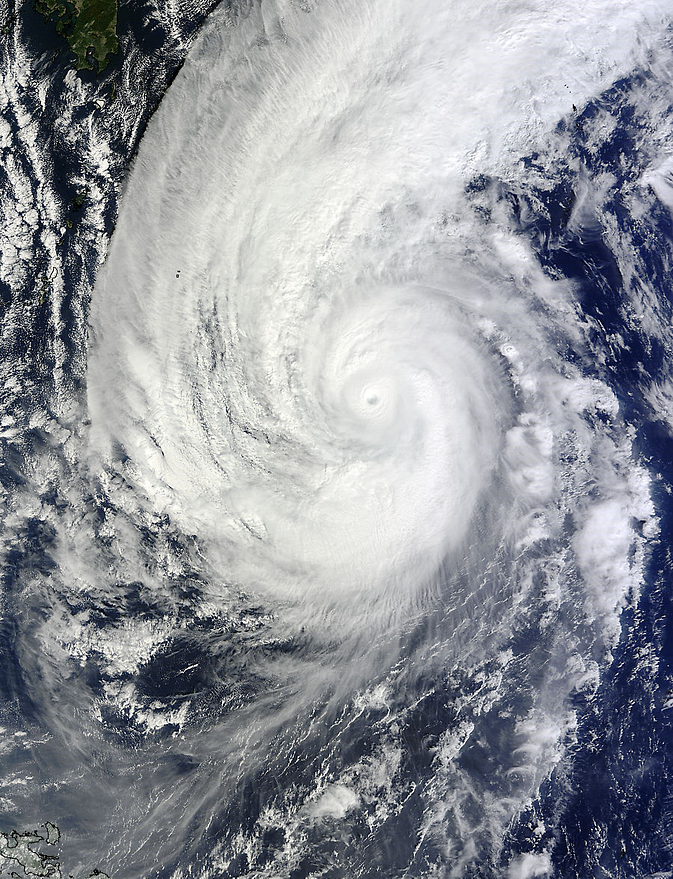NASA's Terra Satellite Sees Typhoon Nuri in Eyewall Replacement

On Nov. 4 at 01:55 UTC (8:55 p.m. ET) NASA's Terra satellite captured this image of Super Typhoon Nuri as clouds moved into its eye. Image Credit: NASA Goddard MODIS Rapid Response Team
Eyewall replacement occurs when the thunderstorms that circle the eye of a powerful typhoons or hurricanes are replaced by other thunderstorms. Basically, a new eye begins to develop around the old eye. Many intense hurricanes undergo at least one of these eyewall replacements during their existence.
On Nov. 4 at 01:55 UTC (8:55 p.m. EST) the Moderate Resolution Imaging Spectroradiometer or MODIS instrument that flies aboard NASA's Terra satellite captured a visible image of Super Typhoon Nuri as clouds moved into its eye.
The MODIS image showed a large, thick band of thunderstorms spiraling into the eye that stretched to the south of the center. The extent of the clouds in the northern quadrant appeared to be just east of Japan.
A microwave image from NASA/JAXA's Tropical Rainfall Measuring Mission showed that Nuri is undergoing eyewall replacement, although the previously observed eye feature has become cloud filled and less defined.
By 1500 UTC (10 a.m. EST), Nuri's maximum sustained winds had dropped to 120 knots (138.1 mph/222.2 kph). Nuri was centered near 23.5 north latitude and 136.6 east longitude, about 293 nautical miles (337.2 miles/542.6 km) west-southwest of Iwo To and has tracked northeastward at 12 knots (13.8 mph/22.2 kph).
NOAA's National Weather Service office on Iwo To (also known as Iwojima) current conditions at 10 a.m. EST on Nov. 4 reported winds from the southeast were sustained at 22 mph. Skies were mostly cloudy and the air temperature was 78F (26C). Heavy rain showers were reported on Nov. 3.
Nuri is passing to the west of Iwo To and is expected to move to the northeast and parallel the big island of Japan over the next couple of days while weakening. Within two days the storm is expected to weaken just below hurricane-force.
Rob Gutro
NASA's Goddard Space Flight Center
Media Contact
All latest news from the category: Physics and Astronomy
This area deals with the fundamental laws and building blocks of nature and how they interact, the properties and the behavior of matter, and research into space and time and their structures.
innovations-report provides in-depth reports and articles on subjects such as astrophysics, laser technologies, nuclear, quantum, particle and solid-state physics, nanotechnologies, planetary research and findings (Mars, Venus) and developments related to the Hubble Telescope.
Newest articles

Properties of new materials for microchips
… can now be measured well. Reseachers of Delft University of Technology demonstrated measuring performance properties of ultrathin silicon membranes. Making ever smaller and more powerful chips requires new ultrathin…

Floating solar’s potential
… to support sustainable development by addressing climate, water, and energy goals holistically. A new study published this week in Nature Energy raises the potential for floating solar photovoltaics (FPV)…

Skyrmions move at record speeds
… a step towards the computing of the future. An international research team led by scientists from the CNRS1 has discovered that the magnetic nanobubbles2 known as skyrmions can be…





















